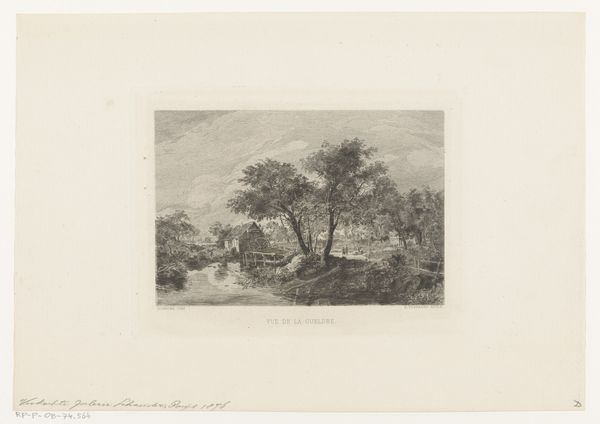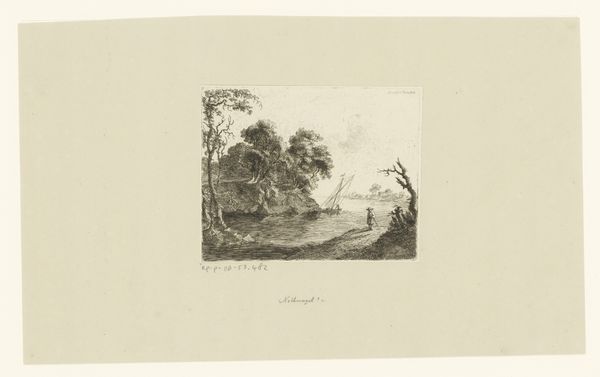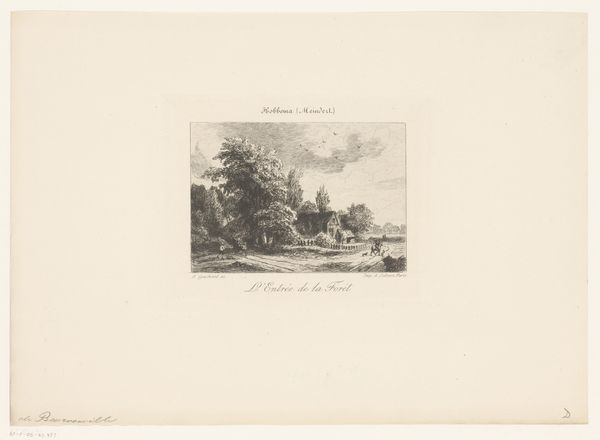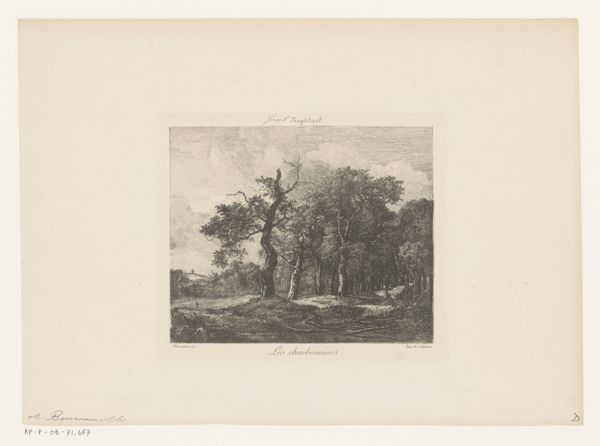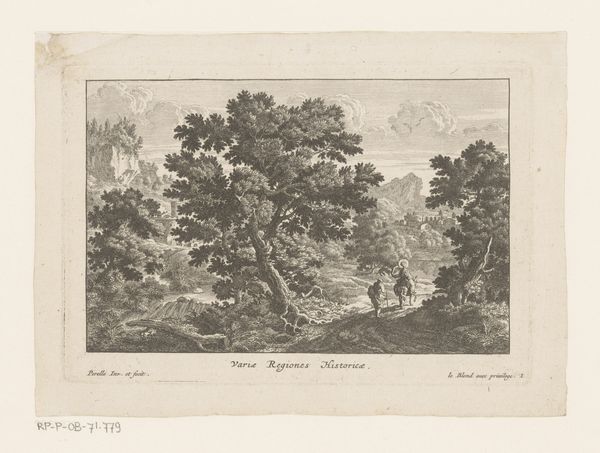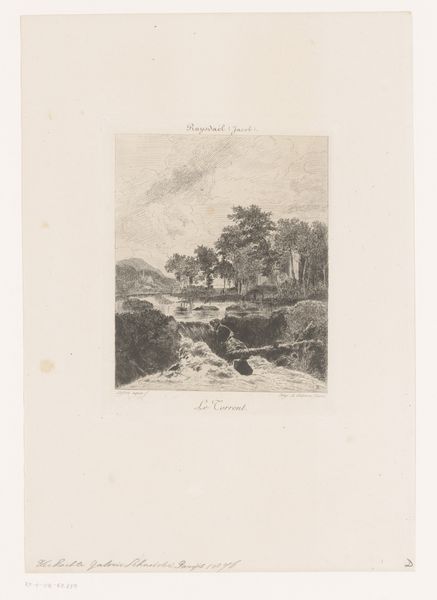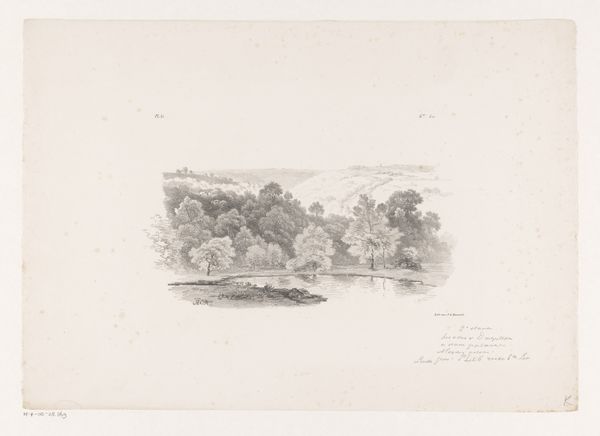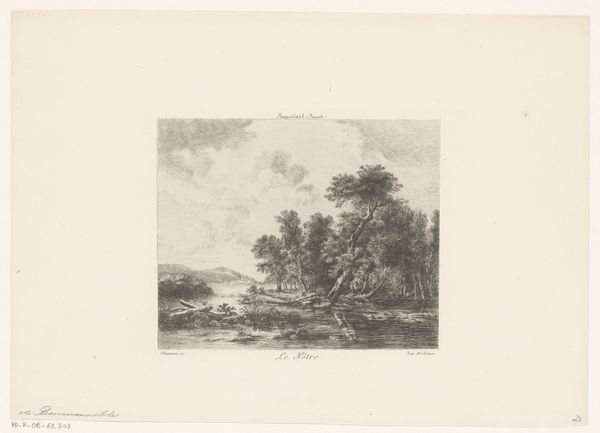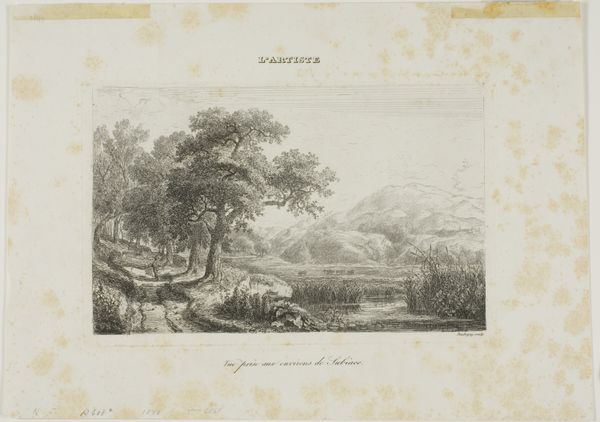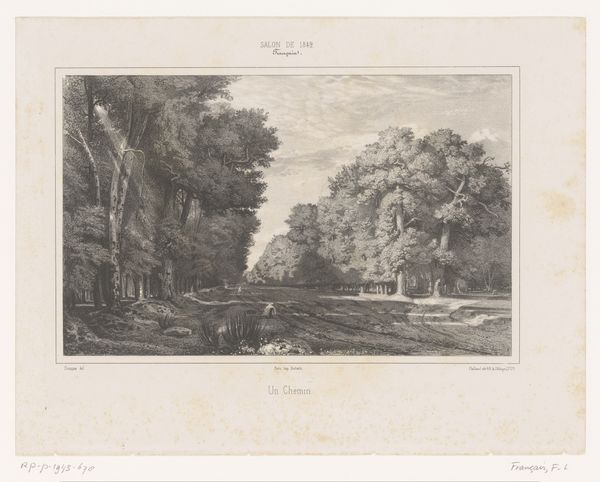
Dimensions: height 216 mm, width 310 mm
Copyright: Rijks Museum: Open Domain
Auguste Boulard created this landscape with cascade using etching, a printmaking technique, sometime between 1852 and 1912. The beauty of etching lies in its capacity to capture intricate details and tonal gradations, and Boulard uses it to great effect here. To achieve this, he would have coated a metal plate with a waxy, acid-resistant substance, drawn his design, and then immersed it in acid. The acid bites into the exposed lines, creating grooves that hold ink. The plate is then cleaned, inked, and pressed onto paper, transferring the image. The rich blacks and delicate grays result from the careful control of the etching process, demonstrating Boulard's expertise in the medium. Though it seems almost effortless, the image required skill, time, and an engagement with the industrial processes of print production. Boulard used craft to capture nature. Hopefully, that gives you a deeper appreciation for the time and labor involved in its creation.
Comments
No comments
Be the first to comment and join the conversation on the ultimate creative platform.
